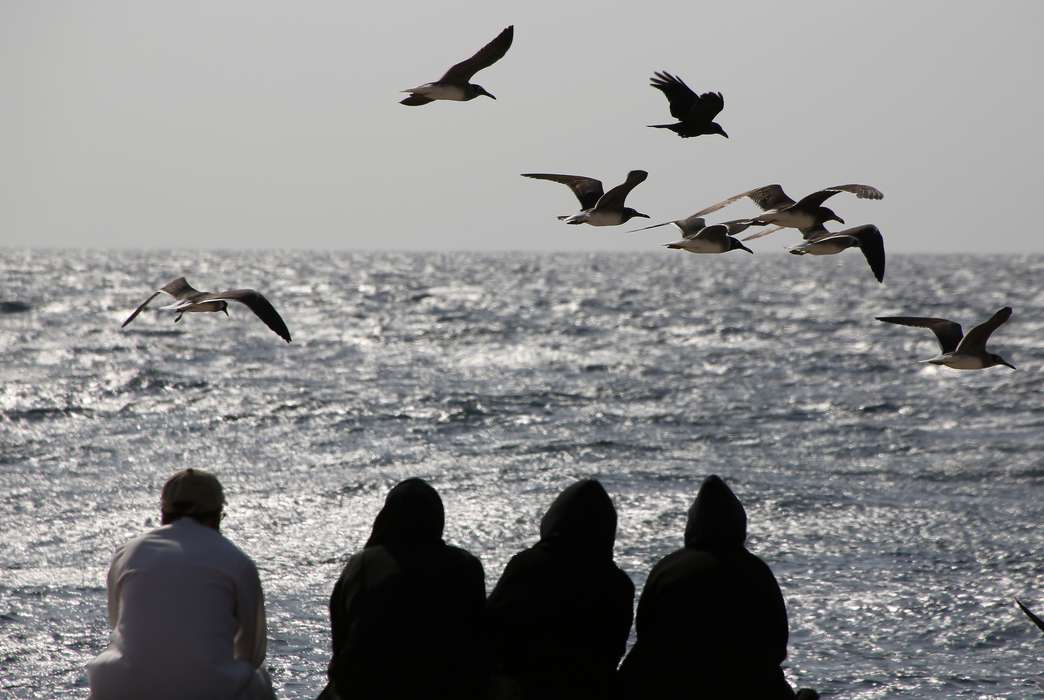Decreasing rainfall is a looming threat to South American hydropower
South American hydropower is in danger from dropping rainfall amounts. (AP Photo/Nicholas K. Geranios)
As rainfall over tropical and semiarid parts of South America declines due to climate change, streamflow will ebb in river basins that are vital for generating hydroelectric power and lead to water scarcity later this century, scientists say.
They used climate modeling and historical climate records to examine how 10 river basins in Brazil and elsewhere will be affected in the coming decades, and concluded that the capacity for hydropower in the region could markedly decline by 2070. The team reported the findings March 23 in Renewable Energy.
Transitioning from fossil fuels to renewable energy is essential for combating climate change. However, renewable sources of energy such as hydroelectric power can be vulnerable to climate change, which is already impacting rainfall, wind speeds, storm intensities and drought frequencies, the researchers wrote in the study.
"The longer we take to make this shift, the more these renewable resources are impacted," said Pieter de Jong, a postdoctoral researcher in engineering at the Federal University of Bahia in Brazil and first author of the study.
Approximately 63% of the electricity generated in South America, and about 65% of Brazil's electricity, currently comes from hydropower, de Jong and his colleagues noted. In the U.S., hydroelectricity accounts for about 7% of utility-scale electricity generation.
Many parts of the world, including northern Brazil and the southwestern United States, are expected to see diminished rainfall and more severe droughts. Until now, though, little was known about how climate change will affect the river basins that supply South America's hydroelectric power.
De Jong and his colleagues examined the eight major hydroelectric basins in Brazil — which also generate hydropower for Bolivia, Paraguay, Argentina and Uruguay — as well as two basins that are important for hydroelectricity in Venezuela and Colombia. The researchers used three different climate models to explore how rainfall, runoff into the basins and streamflow would change through the 21st century under a "business-as-usual" scenario where greenhouse gas emissions are not reined in. For five of the Brazilian basins, the team also compared the findings to rainfall and streamflow observations from 1961 to 2019.
Overall, de Jong said, "Rainfall has already declined in many of these river basins, and is expected to continue to decline."
He and his colleagues projected that streamflow in the São Francisco River, Tocantins River and Parnaiba River would decline by 46%, 31% and 26%, respectively, over the next three decades compared with 20th century observations. Additionally, basins in the northern parts of Brazil could see a decline in runoff as large as 46% to 62% by the period from 2070-99.
"If you know the streamflow and the head height of the dam, you can calculate the power production of that particular dam," said de Jong.
He and his team calculated that, in total, the hydroelectric potential of the five basins they examined had decreased by 25% for the period of 2014-19 compared with the baseline period of 1961-90. While this loss can partly be explained by a severe drought that was impacting most of Brazil at the time, the researchers wrote, their rainfall and runoff projections suggest that this kind of loss will become more common and serious in the future.
Only in the Uruguay River basin, where rainfall was projected to increase slightly, would hydroelectric potential consistently increase under the high-emissions scenario the researchers examined.
The team also found that in northeastern Brazil's São Francisco basin, for which measurements dating back to the 1930s were available, the annual streamflow has remained below its baseline average every year since 1992. The growing demand for water for agriculture and human consumption from the river could outstrip available supply by 2035, which would also be "devastating to the river's natural ecosystem," the researchers wrote.
"Because it's semiarid and is already much drier than the other regions, it's perhaps more sensitive to climate change," de Jong said. "We could find there's not enough water and there could be water conflicts, which actually are already happening to some degree in certain regions of the basin."
To avert water shortages, he says, it will be essential to regulate the amount of water withdrawn for irrigation, find alternative sources of water for cities and limit wasted water by identifying pervasive leaks in the region's aging networks of pipes. Limiting the declines in streamflow will also depend on stopping deforestation in the Amazon and other tropical forests. Recent research shows that the amount of land impacted by human activities in South America has risen 60% over the past three decades.
"Deforestation is very important because the Amazon rainforest holds an enormous amount of humidity and moisture and it is in some sense responsible for a lot of rainfall across a large part of South America," de Jong said.
Restoring vegetation in riparian habitats can also protect the rivers from evaporation, he adds, further reducing declines in streamflow.
The findings represent one set of possible outcomes, de Jong says, which could differ if the world manages to cut down on deforestation and greenhouse gas emissions in the next few decades.
Still, de Jong said, "This type of research is important for risk assessment of water and energy resources and can also support decision making and project planning."
The study, "The Impact of Regional Climate Change on Hydroelectric Resources in South America," published March 23 in Renewable Energy, was authored by Pieter de Jong, Tarssio B. Barreto, Clemente A.S. Tanajura, Karla P. Oliveira-Esquerre, Asher Kiperstok and Ednildo Andrade Torres, Federal University of Bahia.








